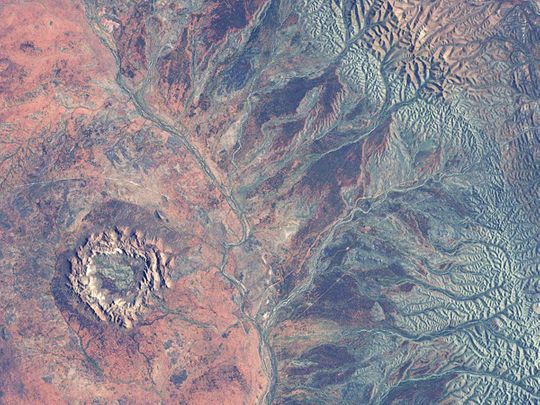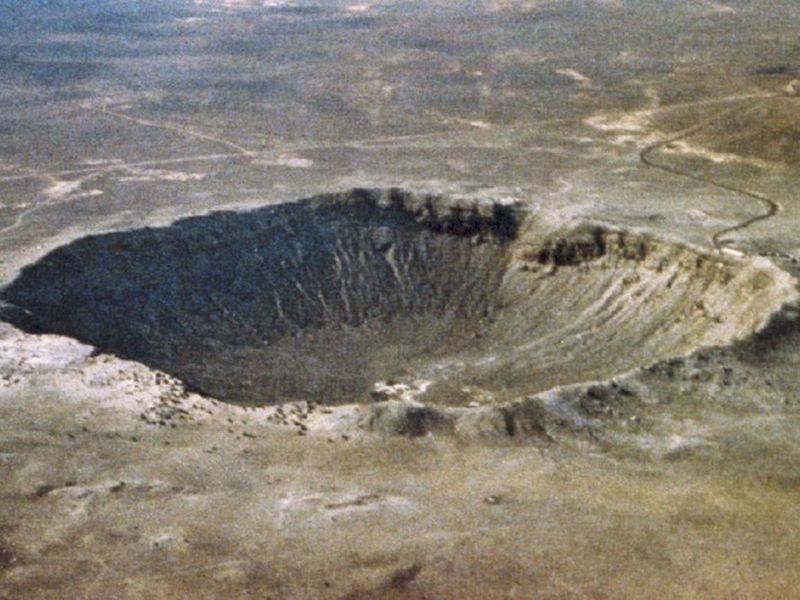
Our planet is constantly being barraged by debris from the cosmos.
Click start to play today’s Word Search, where you can find the names of meteor impact craters from around the world.
Most of the debris burns up during entry through the atmosphere, but meteoroids that do hit, leave behind a striking mark – circular shaped impact craters. How do we humans react to this incredible bombardment from outer space? As space’s only known race with a resilient, entrepreneurial spirit, we make the most of it, and turn it into tourist sites!
According to the Canada based Planetary and Space Science Centre (PASSC), there are 190 confirmed impact structures on Earth. Here are a few that hold incredible history and still draw crowds, thousands of years after the event occurred:
1. Barringer Crater

Also called Meteor Crater, this impact strike is relatively new, in the grand scheme of things – just 50,000 years old. A large iron meteor, measuring 98 feet by 164 feet and weighing 300,000 tonnes, is thought to have crashed into this site in Arizona, US. A mining engineer, Daniel Barringer, was the first to believe the crater was the result of a meteor striking Earth – something scientists didn’t believe. He spent several years investigating, and managed to provide the first proof of origin, which was later accepted by the scientific community. Although Barringer spent his life attempting to mine the crater, in the hope of finding valuable metal, but with no success. According to the American Museum of Natural History, a majority of the meteorite would have been destroyed on impact. The crater is now a well-known tourist site.
2. Lonar Crater

In the Deccan Plateau in south India, is a massive meteorite crater that continues to baffle scientists since it was identified in 1823. It was initially thought to be a volcanic crater, but scientists have concluded it was a result of a meteor impact between 35,000 to 50,000 years ago. The crater is the only one to have formed in basalt, and the water in the crater lake is both saline and alkaline, according to UK-based British Library. Today, the area is a flourishing haven for flora and fauna, with a lake and a unique ecosystem that’s home to varied species of wildlife.
3. Gosses Bluff
Australia has several spectacular impact craters, and the one in Tnorala – Gosses Bluff – is one of the most heavily studied ones in Australia, according to US-based National Aeronautics and Space Administration (Nasa) Earth Observatory. Scientists think a meteor, travelling at 40km per second, crashed into the Earth 142 million years ago, creating a crater nearly 22km wide. Today, the original crater can be seen as a ring of hills in the centre of a circular space. Gosses Bluff is a registered sacred site for the Western Arrernte Aboriginal people in Tnorala, and the whole area is part of Tnorala’s conservation reserve.
Have you been to an impact crater? Play today’s Word Search and tell us at games@gulfnews.com.








